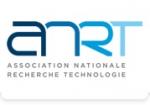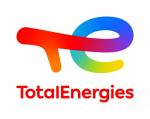Hands-on guide on how to pitch for a network interview
Pitches should not be improvised on the spot. The best pitchers may lead you to believe that the speaker is improvising. But in fact, that's not the case— Pitching allows you to get back to basics, avoiding the pitfall of over-exploitation (which often stifles comprehension).
Here's a method and a few tips to help you introduce yourself - and inspire others to find out more about you!

POSSIBLE SCENARIOS
The pitch is a crucial communication tool to introduce oneself. Potential uses include, but are not limited to:
- You have requested an interview with a key person in your network (executive, R&D manager, consultant...) to talk about your plans and to learn from his/her experience and advice. You walk into his/her office and she/he asks you for the purpose of your visit, along with a short introduction.
- You attend a forum or job fair and target booths for specific companies. You start a conversation with someone at their stand, realize that he/ she is a relevant contact for you and shows interest in you.
- You are attending an afterwork or networking event:
- you are introduced to a professional who wants to find out more about you / one of your projects...
OR
- you have just reached out to a professional with the intention of asking him a series of questions... it is up to you! Start by introducing yourself!
STRUCTURE OF THE PITCH
This is the presentation that you would make at the beginning of an interview with someone you requested to meet with. We recommend the following structure:
- who I am : your name and age, your history... This part should capture the attention of your interviewer, revealing a bit of your personality while making him/her understand how you got there;
- what I did : your experiences and relevant research results. Make choices, point out things that make you proudest, avoiding jargon;
- what I want to do: your plans (a job in a specific sector, creating a start-up...). This section is critical to ensure that your interviewer's advice meets your expectations;
- one final sentence to allow your interlocutor to speak. It shows that you have done the preparatory research before the interview, that you have perfectly targeted the person you met (professional activity, hierarchical level...) and that you have a precise goal at the end of the conversation. For instance, your pitch may end with a question on the interviewer's job.
DO's and DON'TS
TO DO:
- Get ready for this exercise by filming your rehearsals or having your friends and family listen to you. With each attempt, refine your speech and get rid of digressions. The presentation should be clear, simple, practical and impactful. Be careful not to be too long or too technical! Tell a story to hook your audience.
- Sound enthusiastic.
- Adapt the pitch to your interlocutor. When meeting somebody, get them to introduce themselves first. This will provide you with an opportunity to tailor your presentation to your audience.
ATTENTION! Also consider:
- your nonverbal communication – gestures, facial expressions...
- your voice – tone, intonation, good articulation...
TO AVOID
• An overly theatrical or memorized pitch, which does not convince a professional.
• You need to ensure that your speech is authentic and sincere. A little humor is allowed, but CAUTION, keep in mind that it is not stand-up comedy or theater.
USEFUL LINKS
As an extension of your work on the pitch, here are some ABG resources to help you optimize your networking approach:
« Survival guide for people who are not comfortable at network evenings »
Find out more
Survival guide for people who are uncomfortable at network evenings
Author: Bérénice Kimpe (Head of International Department)
After hearing that you need to network, you finally got going and signed up for a networking party. Congratulations! Problem: you're not one of those people who feel at home wherever they go and make contacts in the blink of an eye. Here are a few personal tips on how to make the most of these networking evenings!
Get ABG’s monthly newsletters including news, job offers, grants & fellowships and a selection of relevant events…
Discover our members
 ADEME
ADEME  Servier
Servier  ANRT
ANRT  Aérocentre, Pôle d'excellence régional
Aérocentre, Pôle d'excellence régional  ASNR - Autorité de sûreté nucléaire et de radioprotection - Siège
ASNR - Autorité de sûreté nucléaire et de radioprotection - Siège  CASDEN
CASDEN  Généthon
Généthon  Laboratoire National de Métrologie et d'Essais - LNE
Laboratoire National de Métrologie et d'Essais - LNE  Tecknowmetrix
Tecknowmetrix  ONERA - The French Aerospace Lab
ONERA - The French Aerospace Lab  TotalEnergies
TotalEnergies  Nokia Bell Labs France
Nokia Bell Labs France  Institut Sup'biotech de Paris
Institut Sup'biotech de Paris  CESI
CESI  SUEZ
SUEZ  Ifremer
Ifremer  MabDesign
MabDesign  Groupe AFNOR - Association française de normalisation
Groupe AFNOR - Association française de normalisation  MabDesign
MabDesign  PhDOOC
PhDOOC



